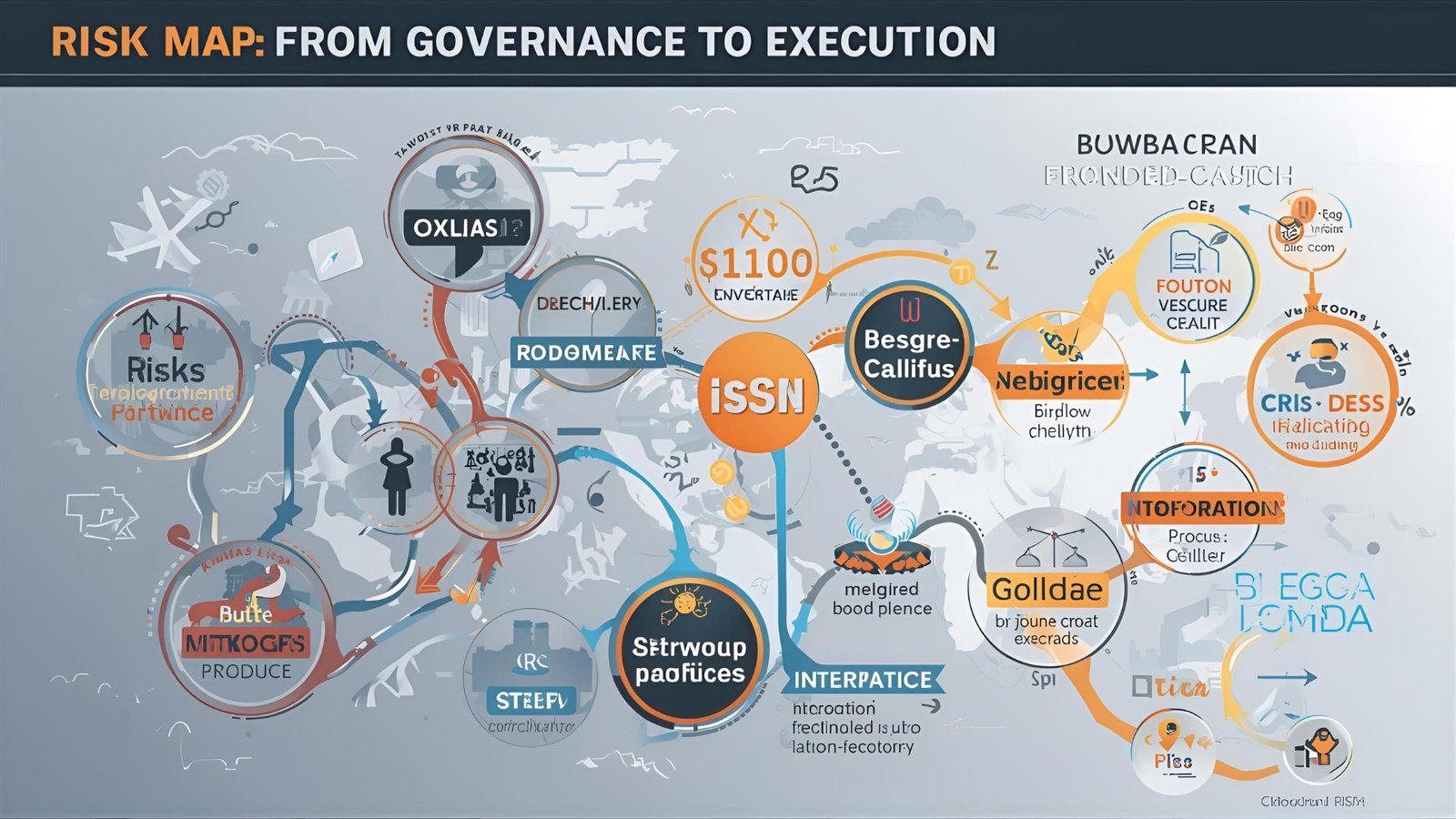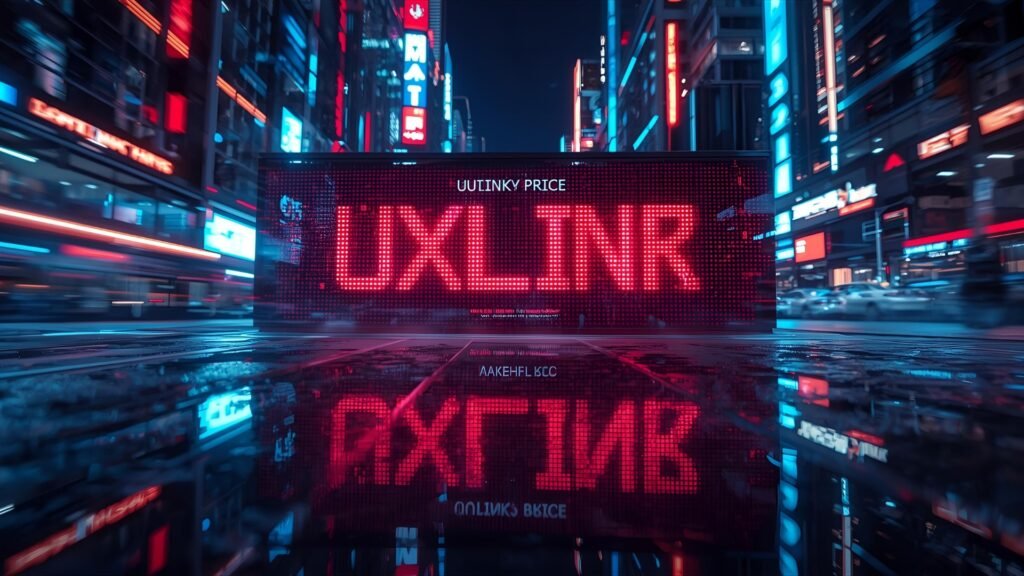The crypto market thrives on narratives, and in recent days, the UXLINK Price has found itself at the center of one. The social-fi project’s token saw a sharp, intraday sell-off of roughly 15%, coinciding with community discussions and planning for a governance vote related to an early token unlock in 2025. For traders and long-term participants alike, it’s a pivotal moment: changes to unlock timing can reshape near-term circulating supply, sentiment, and valuations. Understanding what’s on the table—and what it isn’t—is essential before making any portfolio moves.
In this deep dive, we unpack how UXLINK’s proposed governance vote intersects with its vesting schedule, what a 2025 early unlock could imply for price dynamics, and how the project’s recent security saga shapes the broader story. You’ll find an accessible overview of tokenomics, on-chain and market considerations, and a practical framework for thinking about supply events. Most importantly, we’ll keep the focus on what you can actually monitor: dates, amounts, and decision points that could influence volatility.
The setup: a sell-off meets a supply story
An abrupt price move rarely has a single cause, but the market tends to anchor around the most legible storyline. Here, the narrative is straightforward: more tokens hitting the market sooner than expected—whether truly circulating or simply migrating into staged custody—can translate into short-term pressure. With UXLINK, the developing plan involves a community vote concerning an early unlock in 2025, structured to keep certain tokens in custodial multisig while adjusting other unlocks pro rata to the original schedule. That nuance matters, because not every unlock equals immediate sell pressure; the mechanics—custody, vesting cliffs, exchange listing conditions—determine actual flow.
Recent on-chain and market headlines provide the backdrop. Coverage has documented a security incident that triggered emergency responses, exchange coordination, and mitigation plans, followed by a recovery/migration program and a community vote on compensation mechanics. Such events typically heighten uncertainty, amplify volatility, and sharpen traders’ focus on supply, liquidity, and trust—three drivers that feed directly into how the market reacts to any unlock proposal.
Understanding the proposed early unlock.
What the vote is expected to cover
Public event trackers and related documents point to a community governance vote centered on two core pieces:
-
Advancing a one-time portion of tokens—reported around 4.5% of supply—into a secure custody multisig, and
-
Adjusting remaining unlocks pro rata to the existing whitepaper schedule, with the advanced portion designated for specific strategic uses (notably exchange listings and partnerships) and remaining locked pending triggers. The framing is that these tokens would be transparent and controlled, not instantly spendable, which aims to avoid immediate market pressure while aligning operations with strategic milestones like listings.
Why “custody” is different from “circulation”
It’s tempting to translate “unlock” straight into “circulating supply,” but the market impact depends on where the tokens reside and which conditions gate their movement. If the community approves an early unlock into multisig custody, the supply may be technically unlocked from a vesting perspective, yet economically inert until further governance or listing events release it. This distinction—unlock vs. distribution—is key for understanding near-term pricing. Event calendars and tokenomics trackers help verify dates and percentages, but always read the fine print on spend-authorization and timelocks.
How much is at stake in 2025
Prior materials referenced multiple 2025 unlocks for UXLINK, including third-party calendars that flagged April and July dates, and community posts that summarized January allocations. While amounts vary across sources—and are sometimes framed differently depending on circulating vs. total supply—what’s consistent is that 2025 was already an active year in the vesting plan. The proposed advance thus reshapes the cadence, not necessarily the aggregate for 2025, which is why pro-rata adjustments are emphasized. As always, triangulate with official announcements, tokenomics dashboards, and governance posts when reconciling numbers.
Why a 15% slide can happen fast

Narrative, liquidity, and reflexivity
Crypto markets are reflexive. When traders hear “early unlock,” they often pre-price potential supply by widening spreads, pulling bids, or selling ahead of an event—especially if liquidity is thin. That creates self-fulfilling momentum. For UXLINK, live price trackers captured a sharp drawdown as the story circulated, with intraday declines in the mid-teens before bouncing. This kind of fast repricing is typical when a token’s free float, market depth, and news velocity collide. Watch order-book depth and 24-hour volume when volatility spikes; they often explain how price gaps open and close.
Supply headlines after a security shock
The recent security exploit and the back-and-forth that followed—CEX coordination, swap plans, and recovery timelines—add to the information overhang. In such windows, even neutral supply changes can be read as bearish if confidence has been dented. Conversely, clear and timely governance with auditable custody can rebuild trust. UXLINK’s stated approach—locking advanced tokens, pro-rata rescheduling, and governance visibility—aims to thread that needle by acknowledging operational needs without flooding the market.
Tokenomics, vesting, and the unlock lens
Vesting basics applied to UXLINK
In any vesting design, three questions dominate:
Who gets tokens (team, investors, community, treasury), when they become liquid, and how the distribution is controlled. UXLINK’s public materials and third-party dashboards outline allocations across community, investors, team, and treasury, with scheduled unlocks throughout 2025. The proposed advance would move a slice of supply earlier into custody while stretching others pro rata later, preserving total emission but shifting its timeline.
Circulating supply versus “headline unlocks”
A classic pitfall is double-counting supply risk. If advanced tokens remain custodied and non-transferrable pending defined triggers, the near-term effect on tradable float can be limited even if unlock dashboards record a large nominal release. That’s why governance text and post-vote implementation details matter more than a raw percentage. The Upbit supply notice and governance references emphasize exactly this distinction—advanced into custody, not free-floating—with the intent of transparency and strategic deployment.
The governance dimension: why process quality moves markets
What good governance looks like in this context
When a project pivots its unlock cadence, markets reward clarity, immutability where possible, and security guardrails. Transparent Snapshot votes, clearly defined multisig signers, timelocks on sensitive actions, and documentation that maps before/after schedules can reduce uncertainty. In the wake of UXLINK’s exploit, industry experts have reiterated the value of timelocks, hard-coded caps, and audit discipline—controls that buy the community time to review and respond before state changes finalize. These are not just technical best practices; they are price-relevant signaling mechanisms.
The “advance unlock in custody” compromise
Advancing tokens into custody can be a pragmatic middle path: the team gains operational readiness (e.g., inventory for listings or partnerships) while avoiding immediate sell-through. For UXLINK, the plan as described in public trackers and notices is to hold that advanced tranche for well-defined strategic triggers—notably top-tier exchange listings—and to publish the custody status for community scrutiny. If executed faithfully, this structure aims to retain long-term flexibility without sacrificing near-term market stability.
Security overhang and the road to repair

What happened—and why it still matters for price
The UXLINK exploit dominated recent headlines and temporarily strained the market structure. Reports describe unauthorized minting/movements, exchange outreach to suspend trading during triage, and proposals for token swaps or recovery mechanisms to contain damage. Even after hot fixes, the trust deficit lingers. That’s why unlock governance is landing in a more sensitive market: traders are primed to handicap tail risk more aggressively, and that can magnify reactions to supply news.
Recovery, compensation, and migration steps
The project has outlined a compensation and migration plan—including a 1:1 refund for pre-incident holders and a TWAP-based approach for mid-phase buyers—combined with an on-chain swap window and a community vote to confirm final details. Execution quality here is crucial: getting who, how, and when correct reduces friction, narrows spreads, and supports a return to normal volatility. These are the kind of operational milestones that can turn headline risk into a repair narrative.
How to think about the 2025 early unlock
Short-term: event risk and liquidity pockets
In the near term, expect event-driven volatility keyed to the vote timeline, documentation releases, and any custody attestations the team provides. If the market reads the plan as supply-neutral in the short run—because tokens remain locked in multisig pending listings—the price reaction could moderate. Conversely, if communication leaves room for ambiguity, traders may de-risk first and ask questions later, producing further fast drawdowns or relief rallies as clarifications land. Live trackers and unlock dashboards will remain the market’s anchoring references.
Medium-term: strategy and exchange-readiness
If UXLINK uses an advanced custodial tranche to accelerate exchange relationships or ecosystem partnerships, the medium-term narrative could pivot from supply fear to liquidity expansion—especially if listings increase market depth and reduce UXLINK Price for larger orders. This is where transparent governance and timelocked custody can be a competitive advantage: they show that the project can balance operational needs with holder alignment, a combination that historically supports price resilience after shocks.
Long-term: emissions discipline and credible commitments
Over the long run, what matters most is credibility: sticking to stated tokenomics, documenting any deviations via governance, and attesting to custody and spending rules. Even well-intended changes can unsettle markets if they appear ad hoc. The way to avoid that is through predictable processes—published calendars, auditable multisig policies, and coherently argued proposals. Done right, the project can transform a near-term overhang into a case study in transparent treasury management.
Reading the data: what to watch next
The vote text and implementation details
The single most important artifact will be the final vote text:
-
Exact percentage of tokens to be advanced into custody
-
Destination wallet(s) and signer policy
-
Timelock parameters (if any) for spending or reconfiguration
-
Explicit triggers for any distribution (e.g., listing announcements)
-
Before/after unlock tables to confirm pro-rata adjustments
Event calendars already summarize parts of this, but the vote itself is the source of truth. Cross-check with official notices, supply PDFs, and tokenomics dashboards once posted.
Dates and amounts on unlock trackers
Third-party trackers have flagged 2025 unlock events across multiple months. While useful, treat them as signposts, not scripture. Always reconcile with official documentation, especially after governance changes the cadence. Markets will key off the next concrete date and size; a clear calendar tends to compress uncertainty premiums in price.
Liquidity quality on exchanges
Two things determine how far and fast a token can move on the news: order-book depth and market maker engagement. If upcoming steps do lead to top-tier listings, spreads can tighten and impact costs can fall—making it harder for fear to push price as dramatically. If not, thin books can turn modest selling into a sharp percentage move. Track 24-hour volume, venue mix, and depth around key levels to gauge vulnerability.
Risk map: from governance to execution

Governance risk
Even well-structured proposals can fail to pass, or pass with amendments that change economic impact. If the vote rejects the early unlock, the project returns to the status quo schedule; if it passes with substantial edits, the market must re-price anew. This is classic binary event risk—time your exposure according to your tolerance for gap risk around decision windows.
Operational risk
Moving meaningful supply into custody requires flawless execution: correct addresses, signer coordination, and robust key management. Given recent security headlines, the bar is high. Look for attestations, auditor reviews, or chain analytics confirming that tokens are where they’re supposed to be—and that timelocks or module permissions operate as advertised.
Market structure risk
Instruments like perpetual swaps, borrow markets, and liquidity incentives can amplify or dampen spot volatility. Around unlocks, funding rates, and basis often swing; watch for crowded short-term positioning that can produce violent squeezes in either direction. The presence (or absence) of market makers on key venues also changes the calculus.
Building a decision framework
For short-term traders
If you’re trading the unlock narrative, build a playbook around three checkpoints:
-
Pre-vote: price in uncertainty; volatility sells at a premium.
-
Vote result: re-price based on custody specifics and timelocks.
-
Post-vote execution: verify on-chain moves, listings, and liquidity changes.
Use position sizing that respects the possibility of gap moves and consider time-based exits around decision windows. Real-time order-book and volume metrics will often tell you when the story is shifting.
For long-term participants
If your horizon is months or years, zoom out: does the governance path increase transparency and improve the project’s operational readiness without compromising emissions discipline? The proposed approach—advanced custody, UXLINK Price rescheduling, and clear triggers—can be long-term neutral to positive if executed with rigor and audited controls. Your focus should be on credibility markers: repeated delivery on published timelines, security hardening, and ecosystem growth.
Context from the security incident
Why hacks reshape unlock psychology
After an exploit, markets often over-discount supply events because they’re recalibrating trust. In UXLINK’s case, the exploit story included exchange coordination and discussions of token swap options, while subsequent reporting highlighted a bizarre twist in which the attacker themselves was targeted by phishing. It’s a reminder that operational security is a moving target—and that investors should prefer mechanisms (timelocks, caps, audits) over promises when pricing risk.
The role of compensation and migration
Clear, fair compensation frameworks help stabilize markets by aligning incentives and removing uncertainty discounts. UXLINK’s stated plan includes 1:1 refunds for specific cohorts and TWAP-based compensation for others, coupled with an on-chain migration window and community ratification. Execution here can re-anchor price around fundamentals rather than headline risk, especially if combined with liquidity improvements via listings.
Putting it all together
The 15% price drop tied to the 2025 early unlock vote storyline showcases how supply narratives move crypto markets—especially when layered onto a recent security overhang. But the details matter. If the advanced tranche is custodied, time-locked, and triggered only upon specific milestones, the near-term float may barely change even as the vesting calendar does. The market’s verdict will turn on the precision of the vote text, the rigor of implementation, and the quality of communication around custody and timelines. For traders, that means preparing for event-driven volatility; for long-term holders, it means watching for credible commitments that rebuild trust.
If you track dates, custody attestations, and post-vote execution—not just headlines—you’ll have a clearer view of whether this unlock is supply-bearish, neutral, or strategically bullish in disguise.
Conclusion
UXLINK sits at a critical intersection of tokenomics, governance, and security discipline. The market’s knee-jerk reaction to the early unlock vote underscores how quickly narratives can swing price, particularly in the wake of a security incident. Yet the proposal’s nuance—advance into custody, pro-rata schedule, listing-linked triggers—suggests that the near-term impact on tradable float could be contained if executed faithfully. The way forward is simple if not easy: publish clear vote text, implement with auditable controls, and communicate early and often. Do that, and UXLINK Price can convert a volatility spike into a long-term strengthening of its governance brand.
FAQs
Q: What exactly is the 2025 “early token unlock” being discussed for UXLINK?
A: It refers to a proposed governance vote to advance a one-time portion of tokens—reported around 4.5%—into secure multisig custody, while adjusting the remaining unlocks pro rata to the original schedule. The advanced tokens would remain locked for strategic uses (like exchange listings) rather than entering immediate circulation.
Q: Why did UXLINK’s price drop about 15% on this news?
A: Markets often pre-price potential supply by widening spreads or selling ahead of unlock events, especially amid security-related uncertainty. Live trackers registered a sharp intraday move as the narrative spread, consistent with how illiquidity and sentiment can magnify headlines into price swings.
Q: Will the early unlock immediately increase the circulating supply?
A: Not necessarily. The plan, as described, centers on moving tokens into custody with conditions for release, not pushing them into free float. That’s why the vote text and custody controls matter; they determine the short-run impact on tradable float.
Q: How does the recent security incident factor into all this?
A: The exploit heightened risk sensitivity, making the market more reactive to unlock news. The project’s recovery plan—including refunds, TWAP-based compensation, and an on-chain swap—aims to repair trust. Successful execution can reduce volatility and refocus attention on fundamentals.
Q: What should I watch next to gauge price impact?
A: Three things: the final vote text (percentages, signers, timelocks), on-chain custody attestations confirming where the advanced tokens reside, and any listing announcements that could deepen liquidity and stabilize price. Trackers and official notices will surface the key dates.
Read More: What Is Bitcoin Worth Today? Live Price & Insights 2025


